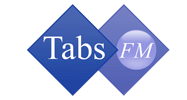Posted by Rob Whalley
10 Key Reporting Outputs from CAFM Systems
Effective facility management relies heavily on accurate and timely information. Computer-Aided Facility Management (CAFM) systems are designed to provide facility managers with the data they need to make informed decisions. One of the most valuable features of CAFM systems is their ability to generate comprehensive reports. These reports can cover a wide range of areas, from space utilisation to maintenance activities. In this blog, we will explore some of the key reporting outputs that CAFM systems offer and how they can benefit your organisation.
1. Space Utilisation and Property Management Reports
Space utilisation reports provide insights into how your facility’s space is being used. These reports can help you identify underutilised areas, optimise space allocation, and plan for future needs. Key metrics often include:
- Occupancy Rates: Percentage of occupied versus available space.
- Lease Details: Renewal dates and break clauses.
- Space Allocation: Breakdown of space usage by department or function.
2. Maintenance Reports
Maintenance reports are crucial for ensuring that your facility is well-maintained and operational. These reports can include:
- Work Order Status: Overview of open, in-progress, and completed work orders.
- Preventive Maintenance: Schedule and completion status of preventive maintenance tasks, 52-week year planners.
- Asset Performance: Data on the performance and condition of critical assets.
- Service Level Agreement (SLA): Achievement of SLA for work orders by site or contractor.
3. Energy Consumption Reports
Energy consumption reports help you monitor and manage your facility’s energy usage. These reports can provide:
- Energy Usage Trends: Analysis of energy consumption over time.
- Cost Analysis: Breakdown of energy costs by area or department.
- Efficiency Metrics: Indicators of energy efficiency and areas for improvement.
4. Compliance Reports
Compliance reports ensure that your facility meets regulatory requirements and industry standards. These reports can include:
- Safety Inspections: Records of safety inspections and compliance status.
- Environmental Compliance: Data on environmental impact and sustainability efforts.
- Regulatory Audits: Documentation of compliance with relevant regulations.
5. Financial Reports
Financial reports provide a detailed view of the costs associated with facility management. These reports can help you track:
- Budget vs. Actual: Comparison of budgeted expenses versus actual spending.
- Cost Allocation: Distribution of costs across different departments or projects.
- Return on Investment (ROI): Analysis of the financial benefits of facility management initiatives.
6. Occupant Satisfaction Reports
Occupant satisfaction reports gauge the satisfaction levels of the people using your facility. These reports can include:
- Survey Results: Feedback from occupants on various aspects of the facility.
- Service Requests: Analysis of service requests and response times.
- Improvement Areas: Identification of areas needing improvement based on occupant feedback.
7. Inventory Reports
Inventory reports help you manage the supplies and equipment needed for facility operations. These reports can provide:
- Stock Levels: Current inventory levels and reorder points.
- Usage Trends: Patterns in inventory usage over time.
- Asset Tracking: Location and status of critical assets.
8. Asset Reports
Asset reports are essential for tracking and managing the lifecycle of your facility’s assets. These reports can include:
- Asset Inventory: Comprehensive list of all assets, including details such as location, condition, and value.
- Lifecycle Management: Information on the lifecycle stages of assets, from acquisition to disposal.
- Depreciation: Calculation of asset depreciation over time, helping with financial planning and budgeting.
- Maintenance History: Detailed records of maintenance activities performed on each asset, aiding in predictive maintenance and asset longevity.
9. Building Condition Reports
Building condition reports provide an overview of the physical state of your facility. These reports can help you prioritise maintenance and renovation projects. Key elements include:
- Structural Integrity: Assessment of the building’s structural components.
- System Performance: Evaluation of HVAC, electrical, plumbing, and other critical systems.
- Safety Issues: Identification of potential safety hazards and compliance with safety standards.
- Condition Ratings: Ratings for different building components, helping to identify areas needing immediate attention.
10. Audit Reports
Audit reports are essential for ensuring accountability and transparency in facility management. These reports can include:
- Compliance Audits: Verification of adherence to regulatory requirements and internal policies.
- Financial Audits: Examination of financial records related to facility management expenses.
- Operational Audits: Review of operational processes and procedures to identify inefficiencies and areas for improvement.
- Risk Assessments: Analysis of potential risks and mitigation strategies to ensure the safety and security of the facility.
Conclusion
CAFM systems offer a wealth of reporting capabilities that can significantly enhance your facility management efforts. By leveraging these key reporting outputs, you can gain valuable insights into your facility’s operations, optimise resource allocation, ensure compliance, and improve overall efficiency. Whether you are focused on space utilisation, maintenance, energy consumption, compliance, financial performance, occupant satisfaction, inventory management, building condition, auditing or asset management, CAFM systems provide the data you need to make informed decisions and drive continuous improvement.
Each of the Tabs CMMS & CAFM modules offer their own reporting capability. For more information on how the Tabs CMMS & CAFM system can help provide essential CAFM reporting, please contact sales@tabsfm.com.













































Follow us:
GDPR (Data Privacy)
Disclaimer
COVID-19